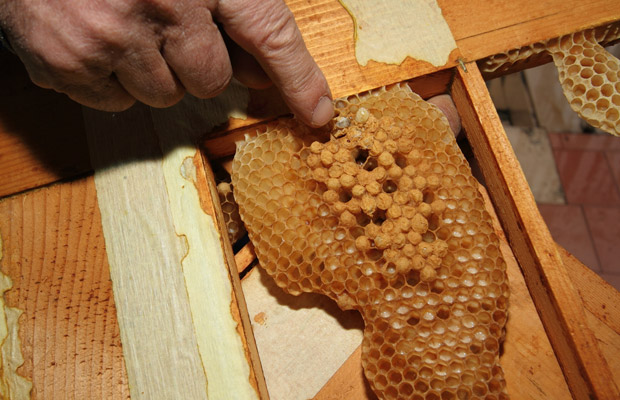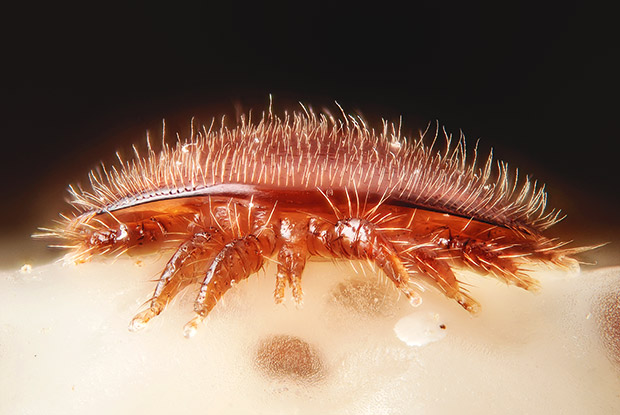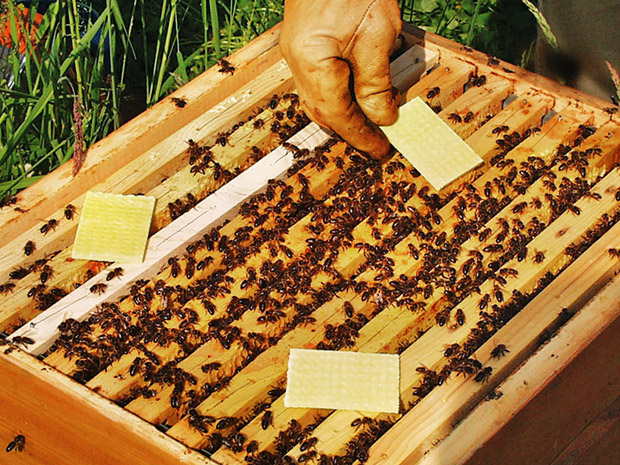7 ways to treat or reduce a varroa mite infestation in your hive

There are several ways you can treat a hive to reduce varroa mite populations.
Words: Lucy Tasker
SYNTHETIC TREATMENTS
Synthetic miticides are a reliable method of reducing or eliminating mites in your hives. It is important to follow the instructions and rotate the chemicals every time you treat a hive. Mites can develop resistance to chemicals over time. Take care during application to avoid contaminating the honey.
1. Bayvarol strips, Apistan (pyrethroids)
Works on the nervous system of the mites, high efficacy (98-99%), no detectable residue in honey.
2. Apitraz, Apivar (amitraz)
Works on the stress response of mites, high efficacy (98-99%), no detectable residue in honey or wax.

A varroa mite on the head of a bee nymph.
ORGANIC TREATMENTS
Naturally-occurring chemicals can also be used to control mite infestations. These can still contaminate honey and must be used carefully, but there’s no evidence of mite resistance.
1. MAQS+ strips (formic acid)
One of the only treatments to kill and cause infertility of the varroa mite both on bees and under the brood cap. Easy application, biodegradable, no residue in honey (must harvest 2+ weeks after the end of treatment).
2. Oxalic acid
Can be vaporised or applied as a powder, works when in direct contact with mites, biodegradable, efficacy varies, generally used as part of an ongoing treatment plan, no residue in honey.
3. Thymovar wafers (thymol)
Releases vapour into the hive at concentrations that kill mites without affecting bees, 87-97% efficacy, not for use when honey supers are in the hive.

Thymovar wafers.
PHYSICAL TREATMENTS
Some beekeepers try to control varroa using physical or behavioural methods, saving the chemical treatments for serious infestations. These methods help to keep the population of mites down, rather than eliminating them completely.
1. Screened bottom board
This involves setting up a hive with a ventilated floor. When mites drop from bees, they fall through and are unable to re-enter the hive.
2. Brood control
A range of methods take advantage of the varroa’s preference for drone brood. Some beekeepers will remove drone brood frames and freeze them to kill off the mites. Others will remove drone brood comb at a certain stage of development. Hives tend to produce an excess of drone brood so this can be done without damage to the colony.
FUTURE SOLUTIONS
Varroa mites continue to damage hives all over the world and are the focus of significant scientific research. Researchers are looking at varroa-resistant bees, how to use formic acid more strategically for a better kill rate, and other varroa mite control options. It’s important to be vigilant about monitoring and treating hives for a varroa infestation while more strategies are developed.
MORE HERE
Love this story? Subscribe now!
 This article first appeared in NZ Lifestyle Block Magazine.
This article first appeared in NZ Lifestyle Block Magazine.
